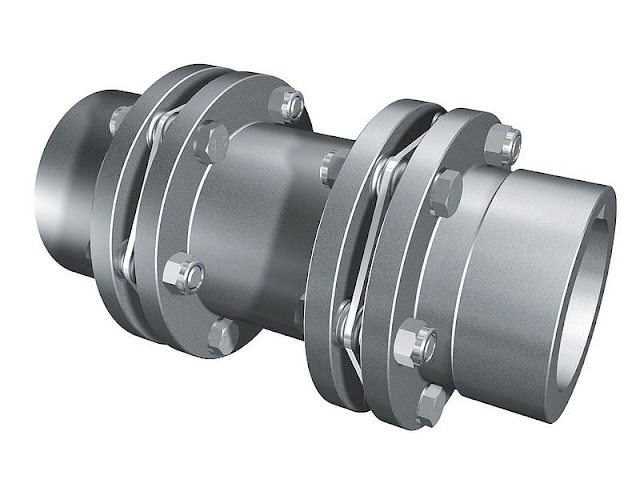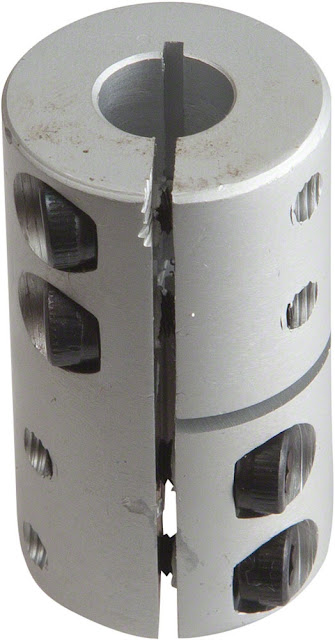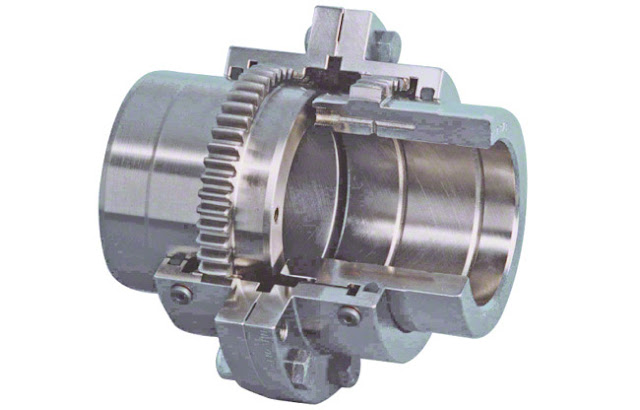Shaft Coupling
Shaft coupling is a mechanical device that is used to connect two shafts of two different equipment for transmitting the power and torque. The pump shaft coupling is used with machinery to connect driver and driven equipment and compensate small amounts of misalignment, power and torque transfer.
There are many types of shaft coupling used to connect the shaft, depending upon its features and its applications. Generally, two types of shaft coupling are used: flexible coupling and rigid coupling. The rigid coupling allows the same amount of same parallel misalignment between both machinery.
Some special types of coupling are also available in the market, which is allow to disconnect both machinery to each other if any abnormality is found during the operations or more torque required to operate or if both machinery exceed the set limit of the design operating condition save from any catastrophic failure.
API has a detailed specification about Special-Purpose Couplings use in Refinery Service, and the specification should be followed as per API 671 guideline. But in that specification, it did not cover general purpose couplings. API 610 Centrifugal Pumps for General Refinery Service 7th Edition in this specification, couplings hub diameter must have a concentric to the bore within 0.003 TIR to aid alignment.
And all coupling couplings balancing requirements specification should be followed as per AGMA 515 class 8, but a new update is also available. The AGMA standard for balancing specification is AGMA-9000 which supersedes AGMA 515. In the above mentioned standard, it did not explain how couplings work or how to select the best coupling for your application.
So a general question is coming in your mind: how does we know?
Which one is used for general purpose and which one is special purpose applications?
The simple answer is that API 610 will be used for general purpose couplings and API 671 will be used for special purpose couplings.
Types of general-purpose couplings
General Purpose Couplings are categories depending upon driver and driven equipment capacity. If equipment is operated under 100 hp, it is considered as small. If it is operated between 100 and 1000 hp is considered medium and if operated above 1000 hp is considered critical.
Above 1000 hp operating equipment is considered as special purpose coupling.
Flexible couplings can be compensating for the following types of misalignment.
- Parallel offset
- Angular offset
- Angular and offset (Parallel and axial)
Parallel Offset
The axes of two machine shafts coupling hub are parallel but not center of both shafts are not in the same straight line.
Angular Offset
The axes of two machine shafts intersect at the center point of the coupling, but total center hub position in some amount in angle position.
Combined Angular And Offset
The axes of both machine shafts hub are not in straight line center and not in parallel as well.
How Many Types Of Shaft Coupling?
Mainly shaft coupling is divided on the basis of purpose of use
- General purpose
- Special purpose
As described in the above section.
What are Spacial Purpose Coupling?
The spacial types of couplings are completely covered in API 671. But has also been categorized into two categories, lubricated and non-lubricated. There is some old rotating equipment that has still used lubricated couplings. BUT most of new equipment or upgrade equipment operate with non-lubricated couplings arrangement. Generally, the types are gear coupling (mechanical element) that require oil or grease lubrication and metallic element types that require no lubrication.
There are mainly two types of non-lubricated couplings is that the diaphragm type and the disc type. For some large equipment elastomeric element type is used, all will be covered in API 671.
Types of shaft coupling
It is divided into two parts, detailed descriptions is below
- Flexible coupling
- Rigid coupling
Flexible coupling
This type of coupling used to transmit the power and torque from one machine shaft to another machine server will allow a little misalignment to each other or in both shafts it will also compensate for very little angular misalignment approx. 1.5 degrees with compensate little vibrations as well.
What is rigid type coupling?
Rigid coupling As a now a days rigid coupling more used. It is also categorized in two part one is metallic type and the other is type Elastomeric.
In Metallic type, the parts are used in little loose fit and in many parts and membranes used in it. Elastomeric parts are used with flexible material like rubber, plastics to transmit the power and torque between metallic hubs.
What is benefits for metallic type coupling ?
Benefits of metallic type coupling
- More stiffness as compared to order type
- High reliability
- Suitable with high MB ambient temperature
- Best suited for high torque application
- Best suited higher RPM speed as compared to elastomeric type.
What is the best application of elastomeric type coupling?
Application of elastomeric type coupling
- Torsional stiffness due to this little shock vibrations
- Gretel radial stiffness that will allow to compensate for small angular misalignment
- Also improve bearing life.
- That is cheaper than other types, because more material is used like rubber plastic and other types.
How much compensates for misalignment of flexible pump coupling?
Accurate figure is not available in the public domain because it varies material to material and that’s misalignment compensated by flexible type decided by the equipment vendor. But the thumb rule is that angular misalignment compensate is approx. 21.5 degree.
What is the factor effect for selecting a best coupling?
To selection of the best coupling for your application, there are many factors for selecting good coupling, these are following.
Operating is speed required, Ambient temperature, weight of the coupling, moment of inertia, torsional stiffness, required outside diameter and inside diameter of the coupling, shaft deflection due to loads, torsional deflection of couplings, backless compensate, misalignment capacity between the shaft balance and unbalance of hubs and coupling as well
How many types of rigid shaft coupling?
Now days in the market there are many types of rigid shaft coupling available. Some of these are mentioned below
- Sleeve coupling muff coupling
- Muff type
- Disc type
- Flange type
- Gear type.






